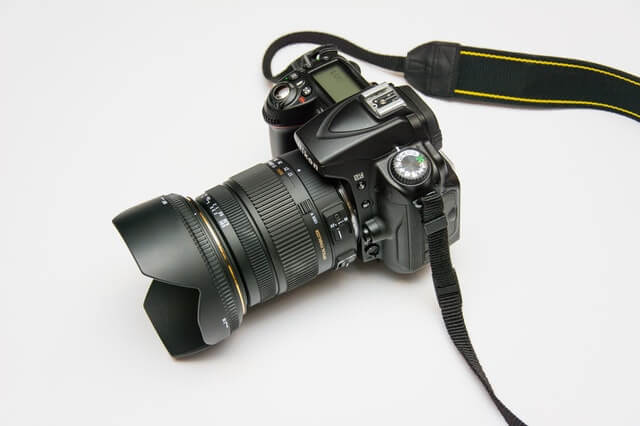Landscape photography is a genre that has always been popular among photographers, and it requires specific types of lenses that can capture the vastness and beauty of natural scenery. Sony, being one of the leading digital camera manufacturers, has developed a range of lenses that cater to different styles and requirements of landscape photography.
In this article, we will explore some of the best Sony lenses for landscape photography in detail. But first, we will discuss the required criteria for a lens to be suitable for landscape photography.
Required criteria for a landscape lens
The lenses we mentioned below were chosen based on a few criteria that are important for landscape photography. So let us discuss them:
-
Lens type: Prime or Zoom
Both prime and zoom lenses have their advantages and disadvantages for landscape photography, and the choice between them ultimately depends on the photographer’s personal preferences and shooting style.
The advantage of prime lenses is that they tend to be lighter and more compact than zoom lenses, and they often have wider maximum apertures, which can be useful for low-light conditions and creating a shallow depth of field.
For landscape photography, prime lenses can be an excellent choice for capturing specific compositions, such as a particular rock formation or a tree against a mountain range. They are also great for capturing high-quality, sharp images, as they tend to have fewer optical elements than zoom lenses, which can result in sharper images.
On the other hand, the main advantage of zoom lenses is their versatility, as they allow the photographer to quickly adjust the focal length to capture the desired composition. However, zoom lenses tend to be larger and heavier than prime lenses, and they often have a narrower maximum aperture, which can limit their low-light capabilities and depth of field.

Photo by Depositphotos
-
Focal Length
Although Landscape photography mostly requires lenses with a wide-angle or ultra-wide-angle focal length that can capture the vastness and beauty of natural scenery. However, there are other situations you may need longer focal length lenses for catching far-away objects. So it seems that choosing lenses with focal lengths ranging from 12mm to 200mm will provide you with a wide range of options for capturing different types of landscapes and scenarios such as:
- Capturing expansive landscapes: such as sweeping vistas, mountain ranges, and seascapes, you definitely need wide-angle lenses with focal lengths between 12mm to 24mm. These lenses are ideal for capturing the vastness of the scenery, and they can create a sense of depth and scale in the image.

Photo by Depositphotos
- Catching details: when capturing landscapes that have some foreground elements, such as trees, rocks, or waterfalls, you need mid-range lenses with focal lengths between 24mm to 70mm. These lenses are also useful for capturing details in the landscape, such as textures and patterns.

Photo by Depositphotos
- Capturing distant landscapes: when capturing landscape features that are far away such as mountains, and hills, you need telephoto lenses with focal lengths between 70mm to 200mm. In addition, they can be used to capture compressed landscapes, where the foreground and background elements appear closer together, creating a unique composition.

Photo by Depositphotos
-
Aperture
Landscape photography can involve shooting in low-light conditions, such as during sunrise or sunset. Therefore, lenses with wide maximum apertures are preferred as they allow more light to enter the camera, enabling faster shutter speeds and lower ISO settings. The lenses we chose have maximum apertures ranging from f/2.8 to f/4, which are considered fast enough for most lighting conditions.

Photo by Depositphotos
-
Image quality & Sharpness
Landscape photography requires sharp images that can capture the details and textures of the scenery with high contrast and resolution from corner to corner of the frame. Therefore, lenses with excellent sharpness are preferred.

Photo by Depositphotos
-
Additional criteria
Landscape photography often involves shooting landscapes at infinity focus or with a large depth of field, making the autofocus feature less critical. However, having fast and accurate autofocus can be beneficial for capturing details in landscapes or for shooting wildlife that may appear in the scene.
Also, image stabilization can be helpful in landscape photography, especially when shooting handheld or in low-light conditions. A lens that has built-in optical image stabilization can help minimize camera shake and produce sharper images.
Best Sony Lenses for Landscape Photography
I- Sony Lenses for Full-Frame Cameras
II- Sony Lenses for Cropped Sensor Cameras
I- Sony Lenses for Full-Frame Cameras
Sony FE 16-35mm f/2.8 GM

Key Features
- E-Mount Lens/Full-Frame Format
- Aperture Range: f/2.8 to f/22
- Two Extra-Low Dispersion Elements
- Three Aspherical and Two XA Elements
- Nano AR Coating and Fluorine Coating
- Direct Drive Super Sonic Wave AF Motors
- Focus Hold Button; AF/MF Switch
- Dust and Moisture-Resistant Construction
- Rounded 11-Blade Diaphragm
This lens is a popular choice among landscape photographers due to its wide-angle focal length, fast maximum aperture, and sharpness. The 16-35mm focal length is perfect for capturing expansive landscapes, and its fast f/2.8 maximum aperture allows for low-light shooting, making it ideal for capturing the sunrise or sunset. The lens also features a direct drive SSM (Super Sonic wave Motor) system that provides fast and quiet autofocus, making it perfect for capturing landscape shots.
Sony FE 12-24mm f/4 G

Key Features
- E-Mount Lens/Full-Frame Format
- Aperture Range: f/4 to f/22
- Four Aspherical Elements
- One Super ED and Three ED Elements
- Nano AR Coating
- Direct Drive Super Sonic Wave AF Motor
- Focus Hold Button; AF/MF Switch
- Dust and Moisture-Resistant Construction
- Rounded 7-Blade Diaphragm
This lens is an ultra-wide-angle lens that provides a unique perspective for landscape photography. It offers an ultra-wide-angle focal length of 12-24mm, making it perfect for capturing vast landscapes and dramatic skies. The lens has an aperture range of f/4 to f/22, which is good enough for most lighting conditions. It features a DDSSM (Direct Drive SSM) focusing system that provides fast and quiet autofocus, and it also has a minimum focusing distance of just 0.28m, making it perfect for shooting close-up details in landscapes.
Tamron 17-28mm f/2.8 Di III RXD

Key Features
- E-Mount Lens/Full-Frame Format
- Aperture Range: f/2.8 to f/22
- XLD and LD Elements
- BBAR and Fluorine Coatings
- RXD Stepping AF Motor
- Moisture-Resistant Construction
- Rounded 9-Blade Diaphragm
The 17-28mm f/2.8 Di III RXD from Tamron is a versatile zoom for full-frame Sony E-mount mirrorless cameras. Covering ultra-wide to wide focal lengths, this lens is particularly suitable for landscape, astrophotography, and architectural shooting. Its bright f/2.8 constant maximum aperture complements this range and affords increased control over the depth of field along with enhanced low-light performance.
Sony FE 24-105mm f/4 G OSS

Key Features
- E-Mount Lens/Full-Frame Format
- Aperture Range: f/4 to f/22
- 4 Aspherical Elements, 3 ED Elements
- Nano AR and Fluorine Coatings
- Direct Drive Super Sonic Wave AF Motor
- Optical SteadyShot Image Stabilization
- Internal Focus Design
- Focus Hold Button; AF/MF Switch
- Dust and Moisture-Resistant Construction
- Rounded 9-Blade Diaphragm
This lens is a versatile zoom lens that is ideal for landscape photography. It offers a wide focal length range that covers both wide-angle and telephoto needs, making it perfect for capturing both expansive vistas and detailed landscapes. The lens has a constant maximum aperture of f/4, which allows for consistent exposure across the zoom range. It also features built-in optical image stabilization, which can help minimize camera shake when shooting handheld, making it an excellent option for landscape photography.
Sony FE 70-200mm f/4 G OSS

Key Features
- E-Mount Lens/Full-Frame Format
- Aperture Range: f/4 to f/22
- Two ED Elements & One Super ED Element
- Two AA Elements & One Aspherical Element
- Nano AR Coating
- Dual Linear AF Motors; Internal Focus
- Optical SteadyShot Image Stabilization
- Focus Hold Buttons; Focus Range Limiter
- Dust and Moisture-Resistant Construction
- Removable, Rotating Tripod Collar
This telephoto lens is perfect for capturing distant landscapes or compressing foreground and background elements. The lens has a focal length range of 70-200mm, which makes it perfect for photographing mountains, waterfalls, and other scenic landscapes. It features a constant maximum aperture of f/4, which allows for consistent exposure across the zoom range. The lens also has built-in optical image stabilization, which is useful for handheld shooting.
II- Sony Lenses for Cropped Sensor Cameras
Sony E 10-18mm f/4 OSS

Key Features
- E-Mount Lens/APS-C Format
- 15-27mm (35mm Equivalent)
- Aperture Range: f/4 to f/22
- One Super ED & Three Aspherical Elements
- Optical SteadyShot Image Stabilization
- Internal Focus
- Minimum Focus Distance: 9.8″
- Seven-Blade Circular Diaphragm
This is an ultra-wide-angle zoom lens designed specifically for APS-C format Sony E-mount cameras. It offers a focal length range of 10-18mm, which is equivalent to a 15-27mm lens on a full-frame camera. It is ideal for capturing expansive landscapes, and its optical image stabilization can help produce sharper images.
Sony E 16-55mm f/2.8 G

Key Features
- E-Mount Lens/APS-C Format
- 24-82.5mm (35mm Equivalent)
- Aperture Range: f/2.8 to f/22
- Four Aspherical Elements
- Three Extra-Low Dispersion Elements
- Nano AR Coating and Fluorine Coating
- XD Linear Motor AF System
- Dust and Moisture Resistant
- Rounded 9-Blade Diaphragm
This lens offers a versatile focal length range of 16-55mm, which is equivalent to a 24-82.5mm lens on a full-frame camera. Its fast maximum aperture of f/2.8 makes it suitable for low-light conditions, and its optical design produces sharp and clear images.
Sony E 18-105mm f/4 OSS

Key Features
- E-Mount Lens/APS-C Format
- 27-157.5mm (35mm Equivalent)
- Aperture Range: f/4 to f/22
- Two ED & Three Aspherical Elements
- Optical SteadyShot Image Stabilization
- Power Zoom Lever; Handycam Technology
- Internal Focus
- Minimum Focus Distance: 1.5′
- Seven-Blade Circular Diaphragm
This lens offers a useful focal length range of 18-105mm, which is equivalent to a 27-157.5mm lens on a full-frame camera. It features a constant maximum aperture of f/4 and optical image stabilization, making it ideal for capturing a wide variety of landscapes, from wide vistas to distant landscapes.
Sony E 18-135mm f/3.5-5.6 OSS

Key Features
- E-Mount Lens/APS-C Format
- Aperture Range: f/3.5 to f/36
- 27-202.5mm (35mm Equivalent)
- Maximum Aperture Range: f/3.5-5.6
- Two ED Elements & One Aspherical Element
- Optical SteadyShot Image Stabilization
- Linear Autofocus Motor
- Minimum Focus Distance: 1.5′
- Rounded 7-Blade Diaphragm
This lens offers a compact and lightweight design with a useful focal length range of 18-135mm, which is equivalent to a 27-202.5mm lens on a full-frame camera. It features optical image stabilization and produces sharp and clear images, making it an excellent all-around lens for landscape photography.
Tamron AF 18-200mm F/3.5-6.3 Di-II

Key Features
- High-Powered 18-200mm Zoom Lens
- Designed for Use With Sony NEX Cameras
- Stepping Motor for Improved AF
- Lightweight 16.2 oz Lens
- Equivalent to 27-300mm Lens
The Tamron AF 18-200mm F/3.5-6.3 Di-II is a popular all-in-one zoom lens designed for APS-C crop sensor cameras. Its focal length range is equivalent to 27-300mm on a full-frame camera, making it a versatile lens that can cover a wide range of shooting scenarios
One of the main advantages of the Tamron AF 18-200mm F/3.5-6.3 Di-II is its convenience as an all-in-one zoom lens. It eliminates the need to carry multiple lenses, making it a great option for photographers who want to travel light or who prefer not to change lenses frequently. However, all-in-one zoom lenses often compromise some image quality for versatility, so they may not produce the same level of sharpness and detail as prime or high-end zoom lenses.
Sony E 55-210mm f/4.5-6.3 OSS

Key Features
- E-Mount Lens/APS-C Format
- 5-315mm (35mm Equivalent)
- Aperture Range: f/4.5-6.3 to f/22-32
- Two ED Elements; Two Aspherical Elements
- Optical SteadyShot Image Stabilization
- Internal Focus
- Minimum Focus Distance: 3.3′
- Rounded 7-Bladed Diaphragm
This telephoto zoom lens offers a focal length range of 55-210mm, which is equivalent to an 82.5-315mm lens on a full-frame camera. It is ideal for capturing distant landscapes, compressing the foreground and background elements in the image. Its optical image stabilization and compact size make it a great option for many genres of photography.
Can’t afford brand-new lenses?
Sometimes, buying a new Lens can be very expensive for many people. However, Keh is a great option to get a used one at a reasonable price. Read the full review here.
Conclusion:
Choosing the right lens is crucial for capturing stunning landscape photos, and Sony offers a range of lenses that are perfect for this genre. The above-mentioned lenses are some of the best lenses for landscape photography that Sony has to offer. Each lens has its unique features and capabilities, and it is up to the photographer to choose the one that best fits their shooting style and needs. With the right lens, a photographer can capture stunning landscape photos that can be enjoyed by everyone.
Related posts
Sony Digital Camera Lenses- The Best Picks
Thanks for reading, I hope you enjoyed the article, in case you have any questions just drop them below & I will be happy to answer you.
The featured photo by Depositphotos
If you enjoy the site, don’t forget to subscribe, we will only inform you when a new article is posted.









Thanks a lot for this valuable and detailed post about Best Sony Lenses For Landscape Photography. This is really a very important post. Because I like to travel a lot. Meanwhile, I also love to take natural photos. You have recommended the best lens for me in this post, do it. I will definitely buy one of these. Keep posting like this. I definitely share this.
Thanks
Landscape photography is a genre that requires specific types of lenses that can capture the vastness and beauty of natural scenery. Sony has developed a range of lenses that cater to different styles and requirements of landscape photography. The lenses we mentioned in this article were chosen based on some important criteria for landscape photography. For example, the focal length, aperture, lens type, and image quality & sharpness are some of the main criteria that are crucial in choosing the right lens for landscape photography. The article also discusses the different focal lengths required for different types of landscapes and situations. The information provided in this article is helpful for photographers who are interested in landscape photography and looking for the best Sony lenses for capturing stunning landscape photos.
Thank you for the feedback